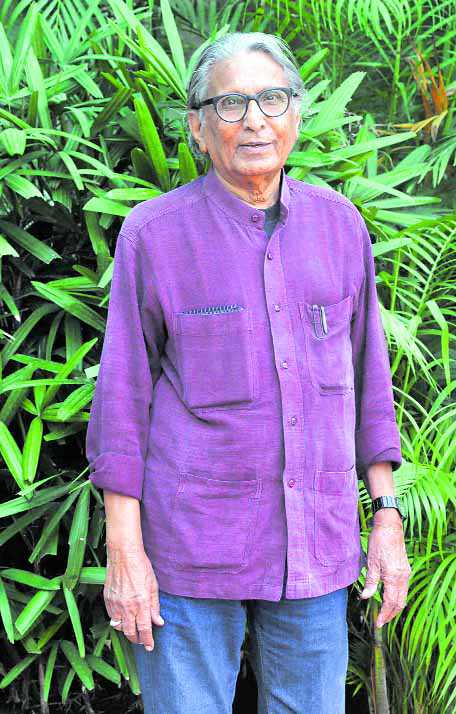
Nonika Singh
He is in the city of his guru rather elated, somewhat perplexed and a whole lot reflective. Back home where in his office hangs a picture of Le Corbusier, he is constantly asking himself— am I on the right track and on the path shown by him? In City Beautiful, one of India’s most celebrated architects Balkrishna Vithaldas Doshi wonders aloud if Corbusier were to revisit the city what would he say and advise. And, this is the question that he wants city residents and planners to dwell upon and seek answers to.
As he himself will be reflecting upon Corbusier’s architecture at the French architect’s iconic Capitol Complex which richly deserves its world heritage status, he decodes and deconstructs what each one of them stands for.
Open Hand, he reminds, is the hand of Buddha as also one of blessing and also represents sharing. Then Assembly is a testimony to the power of people and High Court the symbol of justice and order. “The real wonder is that Corbusier made it all come together as one entity and showed to the world what architecture is all about. In short, Chandigarh indirectly tells us that we should live with minimum disparity and how we should place premium on the value of the land, not its price. It should develop as a society that draws from nature and gives back to nature.”
If the city residents don’t have an answer to how the city should progress, he certainly has. He says, “Planners have to keep in mind the well-being of all. Irrespective of status, all must move forward without strife and with judicious use of resources.”
But with the famed Punjabi propensity for extravagance, does he really think what Corbusier envisioned is possible today? He disagrees that all Punjabis are extravagant, “If a few are, I am sure there are a whole lot who don’t believe in conspicuous consumption.” He goes on to add, “See humanity at large is not cruel but we make it seem so by highlighting only the negative. We don’t focus on what is good for us.” That’s why he feels that we haven’t learnt any lessons from these buildings that are like temples thriving on sustainable use of resources.”
Looking back, he also recalls Corbusier the man with whom he worked in early 1950s in his Paris office. “He was like a yogi who would not meet anyone from eight to 12 in the morning and remained engrossed in research and study. When he came to India he not only studied its people but its animals, nature and realised the close bond we share with nature. And thus what he created added to the reverence of Himalayas.”
Among the many lessons on sustainable architecture Doshi learnt from his mentor, the overriding mantra that he imbibed from him has been, “Observe, dissect, synthesize and transform.” Of course, the governing principle has been—don’t ever imitate. Thus his biggest ode to his guru has been never ever to copy him. No wonder the buildings designed by Doshi such as Centre for Environment and Planning Technology (CEPT), Ahmedabad, Indian Institute of Management, Bangalore, National Institute of Fashion Technology, Delhi and his own office Sangath, BV Doshi’s office, Ahmedabad bear his inimitable stamp, rooted in Indian ethos.
Born in pre-Independence era, a proud Indian, he draws inspiration from ancient cities and his own civilizational connect. “The most important thing our roots like the Vastu Shastra tell us is—buildings are like living entities and the endeavour always has to be to create communities, not dead buildings.”
Having done exemplary work in low cost housing, he agrees that a few grand buildings can’t become a yardstick of architecture. “Buildings are not meant to be gawked at but participatory and to be shared by all.”
On today’s architecture he deems, “Sadly we are becoming imitators creating things that have little to do with us or our lives and hence we are alienated with our own selves.”
How to find our real selves… to know more and learn about his architecture as also his guru’s check out his lectures.
Celebrating the art of architechture on October 25 at Government Museum auditorium and LeCorbusier’s vision of Capitol Complex at the Open Hand Capitol Complex October 26 at 5.15 pm. Organised by Chandigarh Lalit Kala Akademi in collaboration with Chandigarh Tourism



























